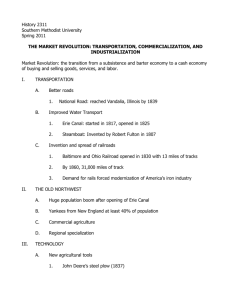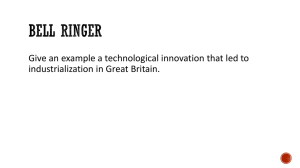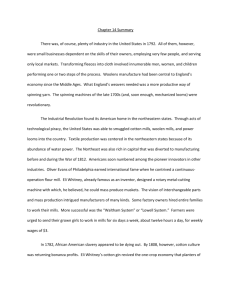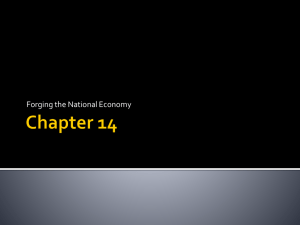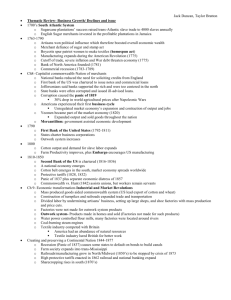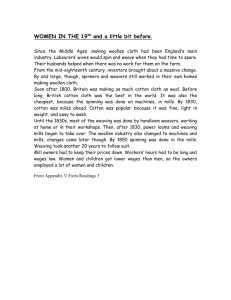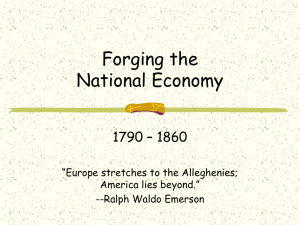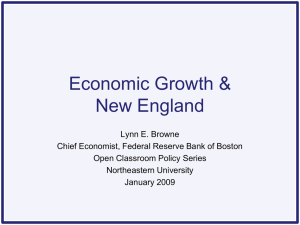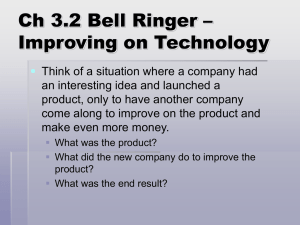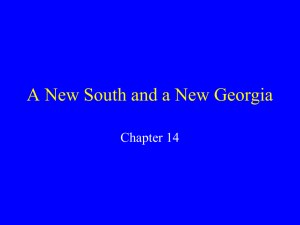Chapter 9 Notes
advertisement
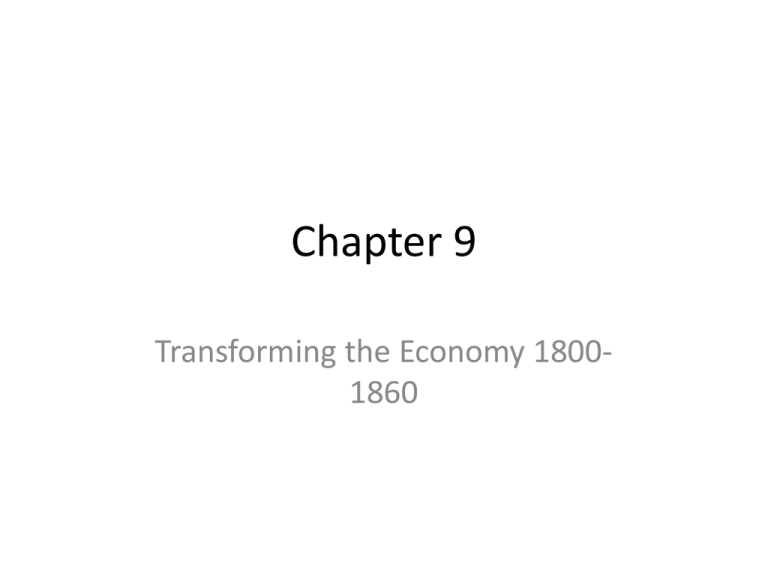
Chapter 9 Transforming the Economy 18001860 The American Industrial Revolution • Traditional Methods – Outwork system and a division of labor – Work was accomplished by farm families, labor was divided through various stages – Water powered mills – 1830’s steam powered machines, thanks to a “mineral based economy” – Britain prohibits knowledge of machinery to leave Samuel Slater Moses Brown Britain and the US Compared Britain • Import American cotton, manufacture it, sell it back to US at a discounted rate • Larger population meant greater access to cheap labor United States • Abundance or natural resources • Congress passed a number of high tariffs • Improved on British technology (Francis Cabot Lowell – Boston Manufacturing Co.) • Used cheap women laborers (Waltham-Lowell System) • Undersold British rivals American Mechanics and Technological Innovation • Franklin Institute in PA – encouraged technical knowledge and innovation • Eli Whitney – Cotton Gin • Samuel F.B. Morse – telegraph Wageworkers and the Labor Movement • Artisan-Republicanism – an ideology of production based on liberty and equality However… • Outwork and factory system led wage earners to be controlled by an employer So… • They attempt to create Unions Unions • Were technically illegal under “common law” • Accused of attempting to injure employers by raising wages • Commonwealth v. Hunt – upheld the right of workers to form unions and call strikes • Feared wage earners were becomes slaves to a “monied aristocracy” – est Labor Theory of Value – price of goods reflects labor to build them and the income should go to the producers The Market Revolution - increase in the exchange of goods and services in market transactions. Reflected the increased output of farms and factories, the entrepreneurial activities of traders and merchants, and the creation of transportation in roads, canals, and railroads Transportation • Migration (peopling) West – • Congress reduced the price of federally owned land •Congress approved funds for a National Road •States Chartered companies to build roads and tolls •Erie Canal •Robert Fulton’s steamboat •National Post Office to ship money, letters, and goods Railways • Linked Northeast with Midwest • John Deere’s steel plow • Linked Deep South to Northern Mills – Trade in cotton made planters wealthy but did not transform their economy like the Midwest, where people invested in manufacturing – Lacking cities, factories, and trained workers, the South remained tied to agriculture Urbanization • Fastest growth in industrial towns • Chicago – capitalized on the cities links to rivers, canals, and railroads. Entrepreneurs built warehouses, mills, packing plants, and machine shops, creating work • New York – Connection to foreign markets, Erie Canal, brought “old and new” together
